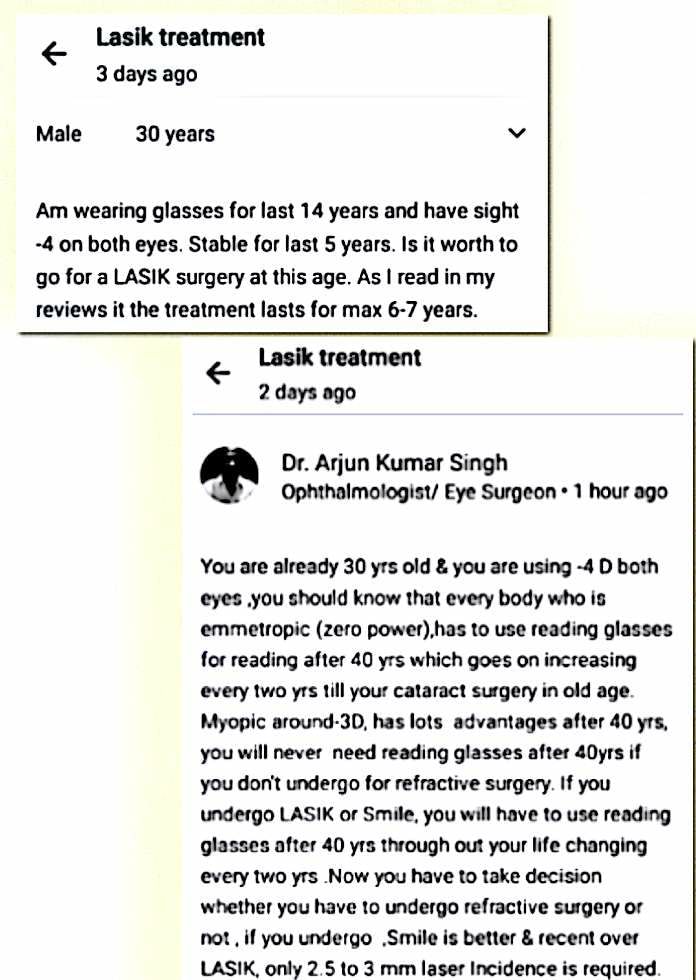LASIK Lasers- A Double Edged Sword, Myths About Them
Considering lasik lasers (for eye glass removal) for their eye glass removal. One must read this as it has some serious implications/complications if done in haste.
There are lot of benefits by being myopic (eye power less than -3 d) and disadvantages in going for lasik laser in young age with low eye power.
You may never need glasses after 40 years (presbyopia) of age for reading if you use glasses or contact lens now instead of getting your glasses removed by lasik lasers (for powers less than - 3d and around -3d) but after lasers you may need the same so going for laser may keep you free from glass for roughly 15 to 20 years only. The myopia can come back even after lasik surgery.
There are variety of complications with lasik lasers like glare, halo and problem in colour contrast, dry eyes, problem in night vision, serious complications like corneal ectasia (may need corneal transplant) although advancement in lasers has minimized these issues still one should refrain from it since the percentage of side effects are highly underplayed
The disadvantages according to my experience outweighs the benefits in young age for those with low myopia (-3d) and considering the risks involved and amount of side effects associated with it which are highly under reported by the doctor.
Lasik operated emmetropic (having normal eye power) are not allowed in airforce, railways and army.
If you are young and advised for lasik in haste without giving due consideration about thickness of cornea, it may result in complications after 5 years and can affect rest of your life.
If you are having high eye power (more than -3d) then there are various issue which should be taken in consideration.
First and foremost, the corneal (outer membrane for eye) thickness must be measured by pachymetry. Indians have a thinner cornea around 400 to 450 micron as compared to western population (around 600 micron).
The critical thickness of cornea must be above 300 micron even after lasik lasers to avoid/minimize future complications.
Since laser burns the cornea, for removing every 1d of eye power, there is a reduction in 35 micron thickness in cornea.
Indians with average thickness of 400 to 450 micron thickness can only go upto 35*5= 175 micron reduction to ensure that their corneal thickness remains above crucial thickness of 300 micron.
So patients are advised to take a independent opinion from a experienced ophthalmologist preferably before going for lasik laser since procedure done on wrongly selected patient can lead to life long complication for the patient.
One can use contact lenses which have become quite advanced with time, if one does not want glasses. All that glitters is not gold and not every side effect can be predicted.
Ref- http:/www.lasikcomplications.com.
Consult online/take a second opinion on www. Lybrate. Com/arjunkumarsingh.
Doctor has done 50000 eye surgeries and has pioneered phaco surgery in undivided bihar in 1995 and was the second person to start phacoemusifications in eastern india.




+1.svg)
